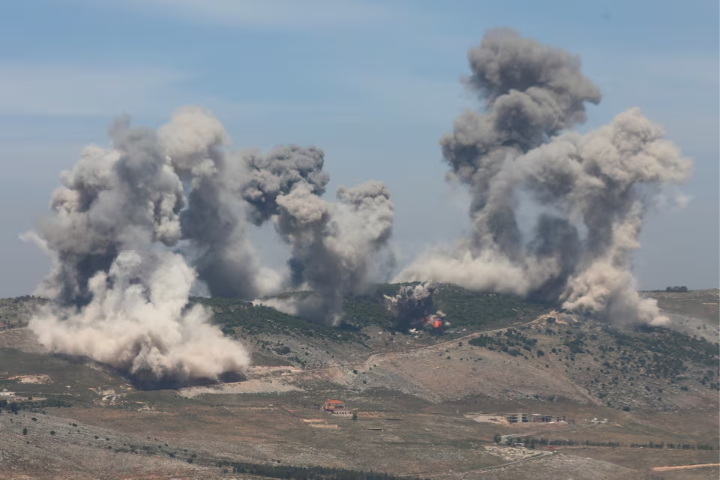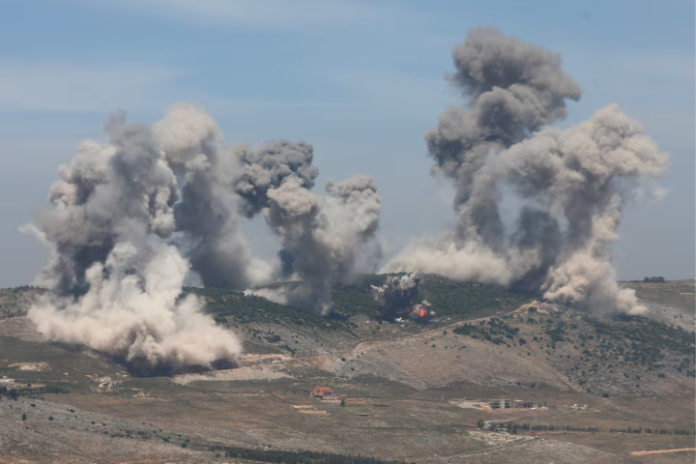Israel has carried out one of its most significant airstrike operations in southern Lebanon since the ceasefire that ended last year’s conflict with the Iran-backed Hezbollah group. The military action on May 8, 2025, saw Israeli forces targeting a Hezbollah infrastructure site in the region, prompting new concerns about escalating violence. This event marks a continued pattern of Israeli airstrikes in the area, despite the fragile ceasefire agreement between Lebanon and Israel.
The Israeli military confirmed the attacks, with reports indicating that at least one person was killed and eight others wounded during the strikes. Thick plumes of smoke were seen rising from the hilltops in the Nabatieh region, which lies approximately 12 kilometers from the Israeli border. These airstrikes are considered among the heaviest Israel has launched in the area since the cessation of hostilities between the two sides.
While the Israeli forces assert that they targeted Hezbollah’s infrastructure, the group itself has not yet responded publicly. Hezbollah had previously declared that it had pulled its forces from the southern region of Lebanon, complying with the terms of a U.S.-brokered truce. This truce, which ended last year’s war, included provisions for a withdrawal of Israeli forces from southern Lebanon and the deployment of the Lebanese army in the border region. Despite these agreements, the situation remains tense, as both Israel and Lebanon accuse each other of violating the ceasefire terms.
The Israeli government has consistently expressed concerns over Hezbollah’s presence in southern Lebanon, despite the group’s assertions that it has complied with the truce terms. Israel still maintains troops in several positions in the region, particularly on five hilltop locations. These positions continue to be a point of contention between the two nations.
In response to the airstrikes, Lebanon’s Health Ministry reported casualties, including a fatality. The local population in the affected areas, particularly in Nabatieh, has witnessed the aftermath of these military operations, with columns of smoke visible in the aftermath of the bombing raids. Israeli airstrikes in the region have been a recurring issue since the ceasefire, with previous strikes also targeting Hezbollah-controlled areas in southern Beirut.
The ceasefire agreement’s terms include a ban on the presence of any armed group in the border regions south of the Litani River, a vital waterway that flows north into the Mediterranean Sea. The truce also stipulated that the Lebanese army should deploy in the southern areas, but reports suggest that the region remains unstable, with occasional rocket attacks being fired from Lebanese territory towards Israel. Hezbollah, however, has denied involvement in these attacks.

In recent months, tensions have escalated due to periodic exchanges of fire between the two sides. The Israeli military has responded with airstrikes following rocket attacks launched from Lebanon, including one suspected Hamas-related attack. These attacks have further strained the fragile peace established by the ceasefire, and both sides are at odds over whether the truce terms are being fully honored.
Israel’s offensive during the war had inflicted severe damage on Hezbollah, killing thousands of fighters and destroying large portions of the group’s weaponry. The conflict, which began after Hezbollah’s support of Hamas in the Gaza war, escalated rapidly. In the wake of the conflict, Hezbollah’s leadership, including figures like Hassan Nasrallah, has struggled to regain footing, while Israel continues to target the group’s positions and infrastructure.
With both nations accusing each other of non-compliance with the ceasefire, the situation in southern Lebanon remains precarious. As Israel’s airstrikes intensify and Hezbollah’s influence in the region continues to be challenged, the possibility of renewed conflict looms large.



